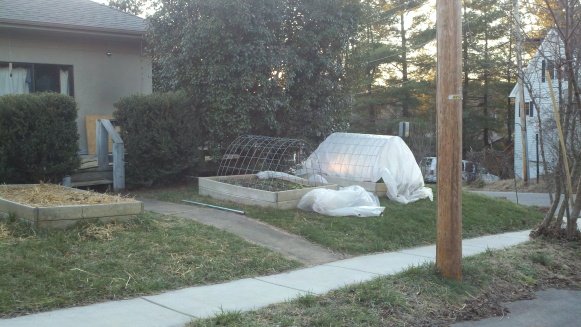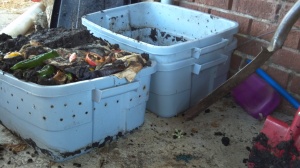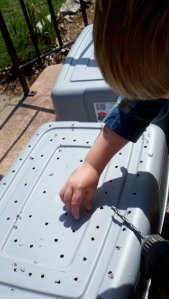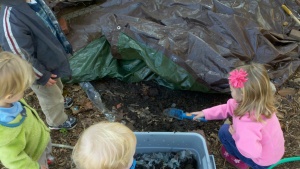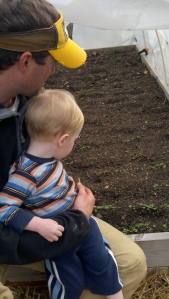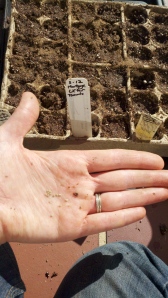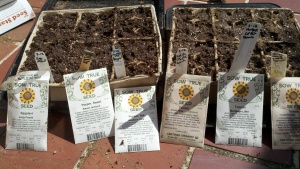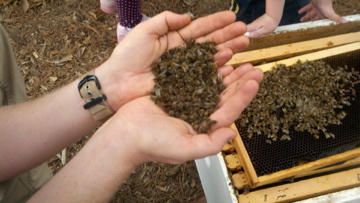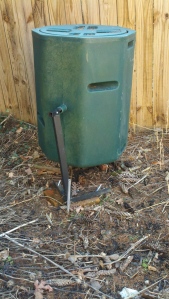It’s mid-January and I’m still seeing cabbage worms, slugs, and aphids on the greens in the garden. The collard greens are lacy with holes (despite the boys helping me pick off the green worms), and the aphids completely coated the dinosaur kale so I had to pull them up and pitch them in the compost.
My older boy found a tick on our dog’s ear over the weekend. I saw a mosquito floating through the kitchen last night. We need some serious cold, y’all! ‘Tis the season to be critter-free!
Well, I must admit I’m not totally hating the recent balminess. It has been nice enough to hang out at the park with the kids and friends, play in the yard and dig around in unfrozen garden soil. Plus, we’ve been able to make some great salads as a result of this unexpected extended season.
Spinach, arugula, and mizuna are doing great. And there are even some tiny carrots coming along. I love to add mizuna to a salad — it’s spicy like arugula but crunchier. I like the light green color too.
carrots coming along. I love to add mizuna to a salad — it’s spicy like arugula but crunchier. I like the light green color too.
I’ve found a few wormy critters munching in this raised bed, but not nearly as many as on the big greens. At a friend’s suggestion, I’ve been soaking the greens in salt water for about 15 minutes before rinsing and putting them in the salad spinner. That helps loosen any bugs.
In late fall, I planted a few rows of mâche seed in the uncovered raised bed next to the arugula. The plants are slow growing but they’ve turned into small, close-to-the-dirt rosettes. I’ve been eating the leaves directly from the garden and they are as mild as lettuce with a taste similar to buttercrunch. I’m going to try making this salad with grapefruit and avocado — a nice antidote to holiday gluttony (although I can eat my weight in avocado, so maybe not!)
Oh, and I’ve been reading that mâche has 3 times more Vitamin C than buttercrunch, and it also packs alot of iron into those little rosettes. Wikipedia has some more interesting facts about mâche — I also find it interesting that such a little plant can have so many different names. And it’s a member of the valerian family. Cool little plant!
A couple of nights last week we had some temperatures in the teens, so I pulled the vinyl covers up onto the hoops to protect the plants. Here are a couple of other raised-bed, front yard gardens I saw in the ‘hood on a run last week after a cold night: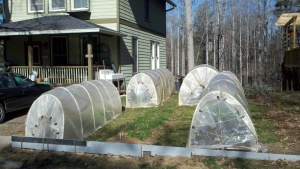
And this one has a different support structure from mine and the ones above — metal fencing — definitely stronger in wind/snow – it seems like overkill now but I’m sure in the next few weeks it will come in handy, right?? Come on, winter!


